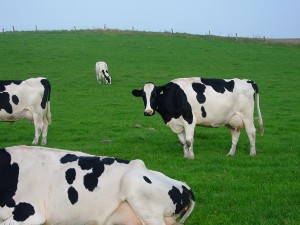 The study trip of GDF to Ireland was a great success! With the group we had open discussions on the subject ‘what will happen after the abolition of the quota in 2015’? We know the dairy sector will grow, but how strongly and how fast?
The study trip of GDF to Ireland was a great success! With the group we had open discussions on the subject ‘what will happen after the abolition of the quota in 2015’? We know the dairy sector will grow, but how strongly and how fast?
Grass-based
Ireland has mainly a grass-based dairy system as we learned. And they are busy making preparations for growth. Heifers are being kept to enlarge the herds and farmers are educating themselves in getting higher yields from their pastures. The Irish Government published the strategy ‘Food Harvest 2020’ in which they describe the pathway to 50% growth of the dairy production by 2020. But will they succeed? This was the main question we asked ourselves during the tour. We expect that Ireland will produce more milk, the first 30% growth will probably be easily reached. But the remaining 20% will be a struggle. Land is momentarily the biggest restrictive factor. A lot of land is stuck at people who probably will not sign it away.
Beef farmers
Ireland has a big group of beef farmers who are retired dairy farmers. They enjoy their low labour system and can afford to deal with the low prices for beef. There is a chance to convert these farms back into dairy farms, but it will be a challenge. The lack of available land could make growth beyond management and efficiency improvements a challenge. Growth also asks farmers to change their way of thinking in certain areas, and although we visited some very innovative farmers, we have at least our doubts about the changes an average farmer is prepared or able to make.
Marketing of milk
After production of milk, the next limiting factor is the market and marketing of milk. At the Irish Dairy Board we saw an inspiring example of adding value to dairy products. The Irish (and the EU) dairy market is already self-sufficient, so every litre of milk that is produced more, has to be sold outside of Ireland, and probably outside of the EU. With creating new products for new markets, chances are created. When the demand does not keep up with the production, milk prices will become more volatile and farmer income become more insecure. When keeping in mind that cost prices probably will stay at the same level or increase, we see a challenge in elevating the ceiling that global demand for high quality milk will create.
All in all, we conclude that growth after the quota abolition is a fact in Ireland. But a growth of 50% is an ambitious goal. GDF will follow the developments up to 2020 with great curiosity!
Thanks to GDF for this summary on the study trip to Ireland 2014.

